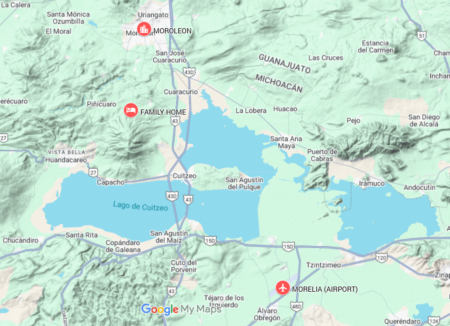
I recently took a ten-day trip to central Mexico, where my wife’s parents live in a peaceful rural community nestled in the hills near Moroleón, a city in the southern part of the state of Guanajuato. The views were stunning: wide-open landscapes dotted with agave plants and cacti, grazing animals, and warm sunlight that lingers just a little longer. It’s the kind of place where time slows down, and you can actually hear the wind.
One afternoon, we paused mid-hike up the hills to listen to it rustling through the papery bark of a golden “El Chaka” Bursera Simaruba tree. That soft, whispery sound became part of our daily walks.
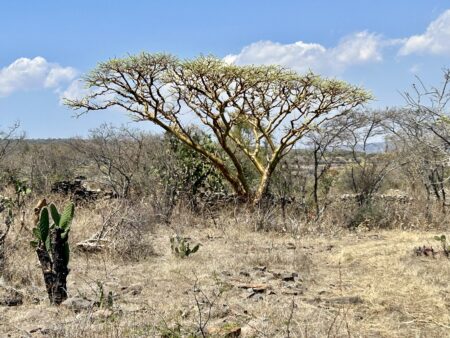
In this small farming community, mornings started early, first with the call of the rooster and soon after, the sounds of the local vendors driving through, announcing their arrival with distinctive horns or loudspeakers. By the end of our stay, I could recognize them by sound alone: Ahh, that’s the horn of the fresh tortilla vendor! Then the paletero with his musical jingle, selling ice-cold paletas (Mexican-style popsicles) in all the local flavors (such as tamarind, passion fruit, and mamey fruit). And that noisy loudspeaker in the late afternoon? That was the electronics sales and repair person running his shop straight from the back of a van. These conveniences are woven into the fabric of this community.
While the rural community itself was the perfect getaway from the buzz of city life, I found myself curious about the rhythm of nearby urban areas, especially how people get around. We spent a couple of days venturing into Moroleón, which offered a fascinating look at how transit works in this part of Mexico.
Travel Modes In and Around Moroleón, Mexico
Public transit here doesn’t quite look like what you’d find in a major city, with buses on strict schedules and digital tracking. Small buses (camionetas) run between cities, but it’s not a formal system. There are no posted timetables, no tracking apps, and often no marked bus stops. Most people seem to know when and where to catch the bus through experience, habit, or word of mouth, and the drivers are often locals who tend to know their passengers by name.
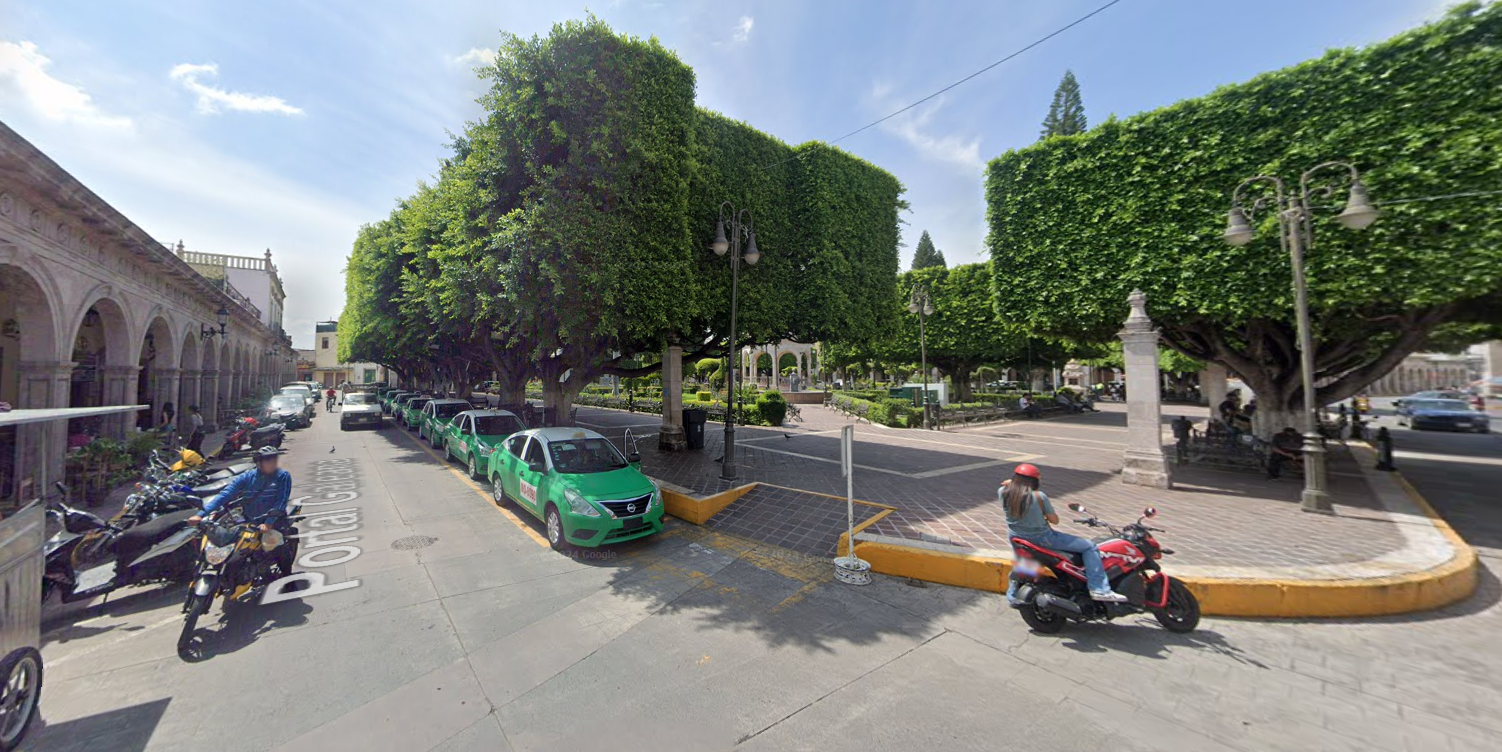
What really stood out to me was the reliance on cabs, personal vehicles, and motorbikes. There’s no Uber or Lyft here, but taxis are everywhere—especially in the central square of Moroleón. We’d walk up to the next green cab in line, and in no time we’d be winding our way back up the hills to the family home. The rides were quick, reliable, and affordable. There was also a protected bike lane running through the main corridor into downtown Moroleón, and it seemed to get regular use—from teenagers on errands to workers on their daily commutes.
There’s a strong sense of shared responsibility and trust in how people move around. People might catch a ride with a neighbor into the city or pay some pesos for a cab ride home. In a way, it’s a more human-centered system—less focused on posted timetables or tech, and more on trust, flexibility, and getting people where they need to go, whichever way works best for them.
Observations from the Street
Walking through the streets of Moroleón, here are my key takeaways:
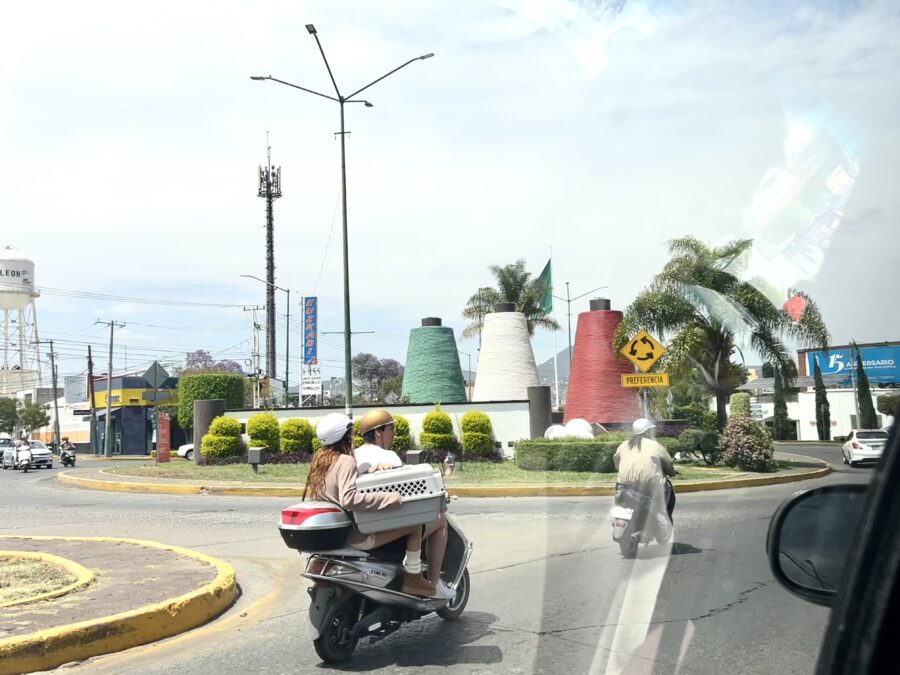
- The region runs on local knowledge. People rely on trust and familiarity, often knowing when and where to catch a bus without needing signs or schedules. Whether traveling to work, visiting friends of family, or doing errands, people are flexible in improvising their travel plans.
- Motorbikes are everywhere. They are ridden solo, with a friend, a partner, or your pet dog balanced on your leg. Helmets are very common but not universal.
- The bike lane is essential. It’s busy, respected, and used by a wide mix of people for travel within the city. While there are some designated areas for motorbike parking in the city, bike racks remain limited. You’ll also see bikes and motorbikes parked in front of corner shops and restaurants.
- Taxis are a lifeline. They connect the city to the rural communities and settlements outside town. Whether lined up in the town square or flagged down along the road, they’re part of the everyday movement.
Final Thoughts
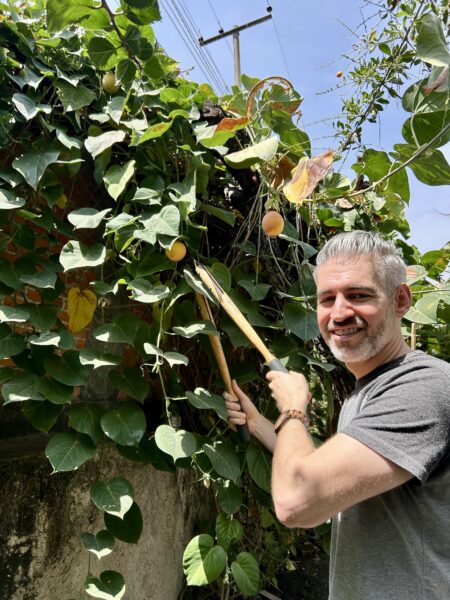

My favorite parts of this trip were the simple moments: spending time on the family farm, cooking with fresh local ingredients, and picking ripe passion fruit straight from the vine. But stepping into town sparked my curiosity about the local culture and how people get around.
Transit isn’t always a bus or a train: it can be a shared cab, a neighbor giving you a lift, or a ride on the back of a motorbike. Sometimes, it’s just a matter of community, trust, and a little improvisation.
If you’re ever in this part of Mexico, I highly recommend soaking up not just the beautiful landscapes, but the daily flow of life, the kindness of strangers, and the easy pace that makes everything feel a little more human.